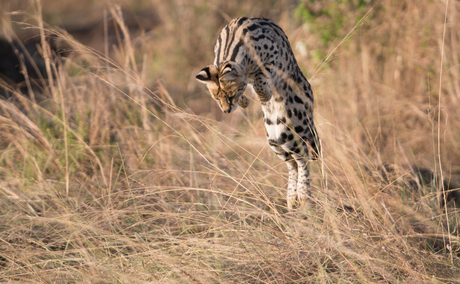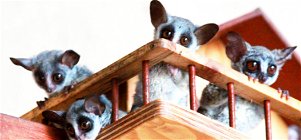The serval cat, a lesser-known predator in Kruger National Park, is a master of stealth and agility. With long legs for navigating tall grass and radar-like ears for detecting prey, it can leap three meters to catch birds mid-flight. This elusive, nocturnal hunter embodies the mystery of the African bush, making any rare sighting an unforgettable experience.
Kruger National Park: A Guide to Seasons and Safari Adventures

Kruger National Park in Africa offers a captivating safari adventure with its diverse wildlife. The guide covers two main seasons: the wet season (November to April) and the dry season (May to October).
The wet season boasts lush landscapes and abundant wildlife but can have challenging road conditions and hot, humid weather. The dry season offers cooler weather and optimal game viewing, but animals may be more dispersed. Regardless of the season, Kruger National Park promises an unforgettable experience, with Needles Lodge as your gateway to its wonders.
Nestled in the heart of Africa, Kruger National Park beckons with its captivating blend of extraordinary wildlife, diverse landscapes, and thrilling safari experiences. This iconic destination, renowned for hosting the famed Big Five – lions, leopards, elephants, rhinoceros, and buffalos – along with a plethora of other remarkable creatures like graceful giraffes, majestic zebras, and lumbering hippopotamuses, offers an adventure of a lifetime. Whether you're a wildlife enthusiast, a birding aficionado, or simply seeking the unparalleled beauty of nature, Kruger National Park has something for everyone. In this comprehensive guide, we'll take you through the park's seasonal variations, helping you choose the ideal time to embark on your safari odyssey.
Wet Season (November to April)
As the curtain rises on the wet season in Kruger National Park, a warm embrace envelops the landscape. Average temperatures dance between 25 to 30 degrees Celsius (77 to 86 degrees Fahrenheit), creating a balmy atmosphere. During this period, the park welcomes approximately 500 mm (20 inches) of rainfall, replenishing its water sources. However, this influx of rain can render some roads impassable. It's important to note that the wet season isn't just a transformation of the park's climate; it's also a metamorphosis of its wildlife dynamics.
Pros of Visiting During the Wet Season:
Wildlife Spectacle: The wet season is unequivocally the best time to witness the park's wildlife. With water sources plentiful, animals congregate around them, creating an astonishing spectacle of nature.
Avian Extravaganza: Birdwatching enthusiasts will find themselves in paradise during this time. The wet season heralds the arrival of numerous migratory birds, offering exceptional birdwatching opportunities.
Abundance of Life: The park's flora flourishes, painting the landscape in vibrant hues. It's a mesmerizing sight for those with an eye for botanical beauty.
Cons of Visiting During the Wet Season:
Challenging Roads: The heavy rainfall can render some roads impassable, limiting your access to certain areas of the park.
Hot and Humid Weather: The wet season can bring hot and humid weather, which may not be to everyone's liking.
Malaria Risk: The increased presence of water sources can also elevate the risk of malaria, so taking appropriate precautions is essential.
Dry Season (May to October):
As the wet season makes its exit, the dry season ushers in cooler temperatures, ranging from 15 to 25 degrees Celsius (59 to 77 degrees Fahrenheit). Rainfall becomes a rarity, causing the bushveld to shed its green cloak and revealing the open expanse beyond. While the dry season offers unique advantages, it presents its own set of challenges for intrepid safari-goers.
Pros of Visiting During the Dry Season:
Cooler Weather: The cooler, drier climate provides respite from the heat and humidity of the wet season, ensuring more comfortable safari adventures.
Clear Sightlines: With sparse foliage, the bushveld offers clear sightlines, making wildlife easier to spot.
Optimal Game Viewing: The animals are forced to congregate around dwindling water sources, making game drives particularly rewarding.
Cons of Visiting During the Dry Season:
Wildlife distribution: You might experience less frequent animal sightings, with longer intervals of not spotting any creatures during your gamedrive. This is because water sources become scarcer, forcing the animals to congregate around the limited water sources scattered across the park.
Dusty and Hot: The dry season can be dusty and hot, so prepare accordingly with appropriate attire and gear.
Increased
Fire Risk: The parched landscape is more susceptible to fires during this season, altering the scenery.
Chilly Mornings and Evenings: It can be quite chilly in the early morning and evenings, so ensure you bring warm clothing and dress in layers as the day progresses.
Choosing the Right Time for Your Safari:
Selecting the ideal time to visit Kruger National Park hinges on your preferences and interests. If your primary goal is to witness wildlife in abundance, relish vibrant flora, and indulge in birdwatching and photography, the wet season beckons. However, be prepared for the challenges that come with it, including potential road closures and heightened malaria risk.
Conversely, if you yearn for cooler weather, clear sightlines, and exceptional game drives, the dry season is your ticket to adventure. Although the animals may be more dispersed, the rewards of a well-planned safari during this time are unparalleled.
No matter when you choose to embark on your Kruger National Park safari, you're guaranteed an unforgettable experience. This extraordinary destination boasts not only a diverse array of wildlife but also awe-inspiring landscapes. To ensure a seamless journey, consider booking your accommodation well in advance, especially if you plan to visit during peak season. Additionally, tailor your activities to your interests, whether that's game drives, bush walks, birdwatching, or even fishing. Don't forget to pack essential gear such as sunscreen, insect repellent, hats, sunglasses, and, of course, binoculars and a camera. (Essential Packing Guide for Your South Africa Safari Adventure) Finally, acquaint yourself with the park's regulations and the wildlife you're likely to encounter, ensuring a safe and enriching adventure.
By following these guidelines, you can confidently plan an unforgettable Kruger National Park safari tailored to your desires.




Share This Post